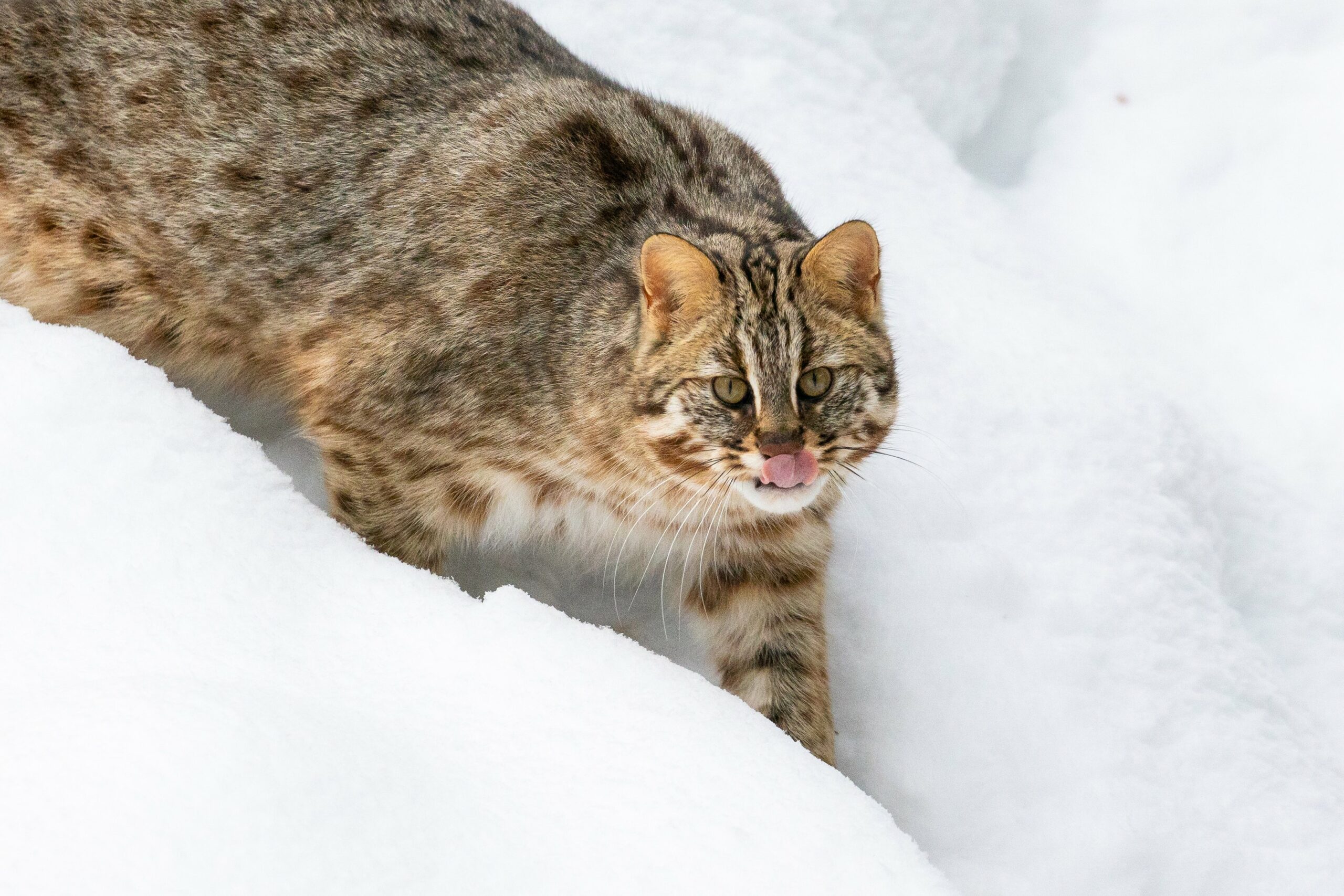
Amur leopard cat
LIVING HABITS
Native to the Amur region in eastern Asia, the Amur leopard cat is the northernmost subspecies of the leopard cat. It has adapted to cold conditions, even though the snow layer in the area remains shallow. As a habitat, it prefers open pine forests, where it is a skillfull climber. However, the Amur leopard cat often spends time on the ground in the shadows of vegetation, where it mainly preys on small mammals at night; rats, mice and birds, but also lizards, amphibians insects and fish are part of its diet.
Like many felines, the Amur leopard cat is a solitary animal only meeting other individuals during mating time.
PROTECTION
The species is currently classified as least concerned in general, but local populations are thought to be endangered, or extremely endangered in Japan’s Tsushima island group.
The spotted fur of the Amur leopard cat has attracted fur hunters, leading to the endangerment of subpopulations of the species. The fragmentation and disappearance of habitats is currently the biggest threat to the species’ in its entire range.
The Amur leopard cat plays an important role in maintaining a diverse ecosystem in the forests of East Asia, along with its better-known cousins the Amur tiger and the Amur leopard.
Amur leopard cat
Prionailurus bengalensis euptilurus
Class: Mammalia – Mammals
Order: Carnivora- Carnivores
Family: Felidae – Feline
Size: lenght 50-90 cm + tail 40 cm, stands at 35-42 cm at the withers, weight 3-8 kg
BREEDING: Gestation 56-70 days. Offspring 1-4.
LIFESPAN: 10-15 years


Did you know…
The Amur leopard cat can also fish! It is good at swimming and doesn’t avoid playing in the water either.




